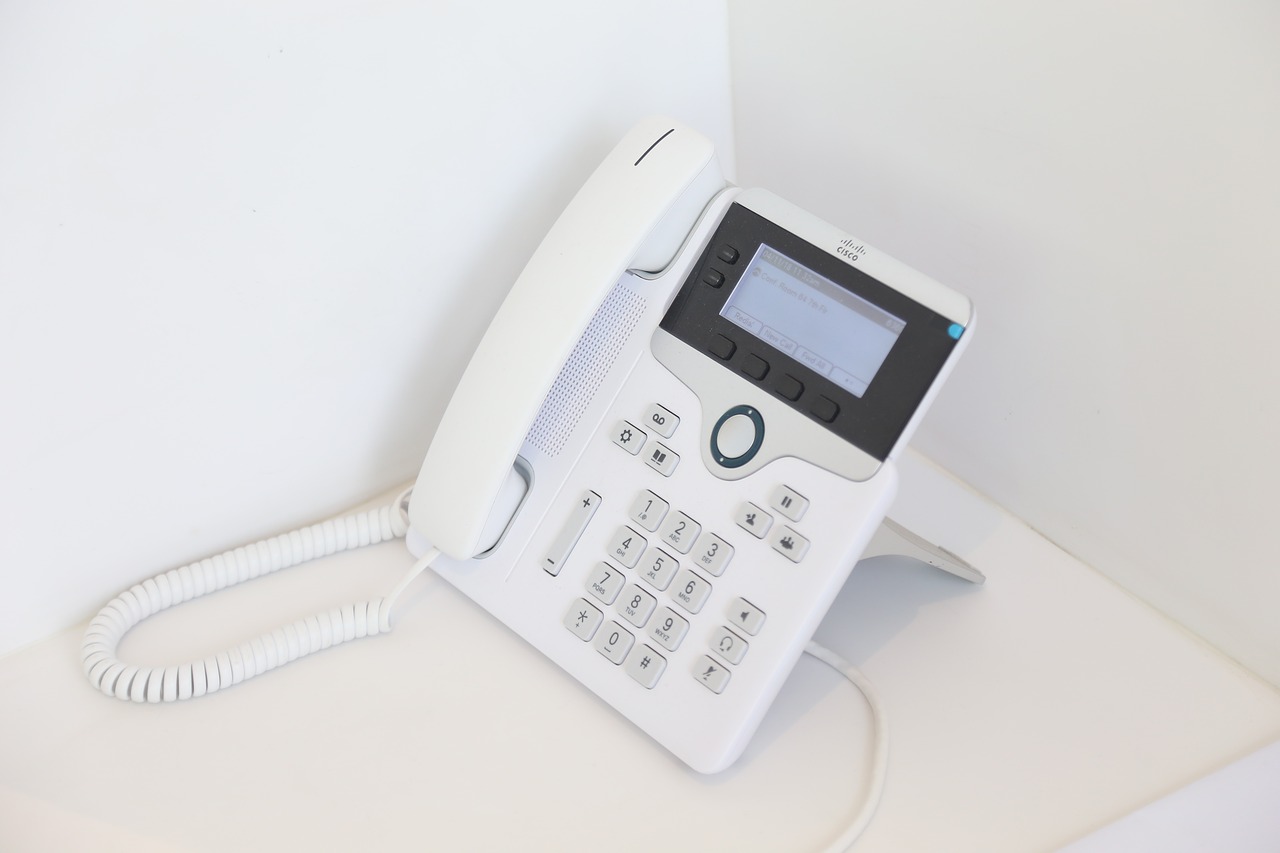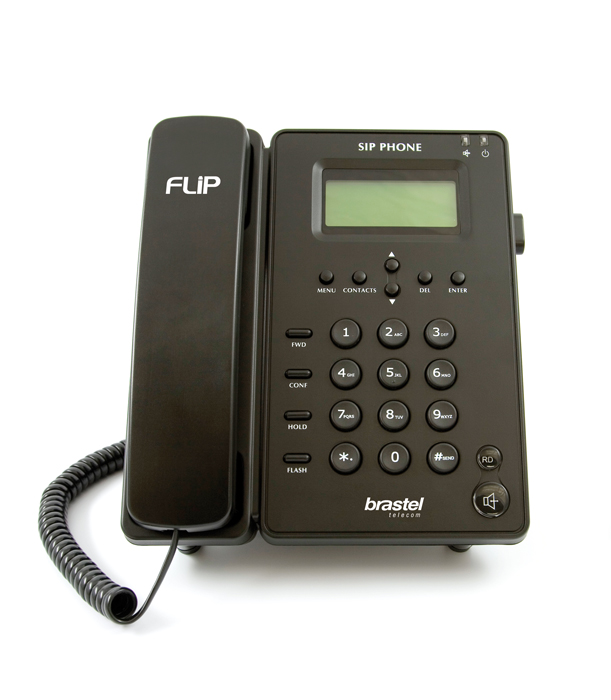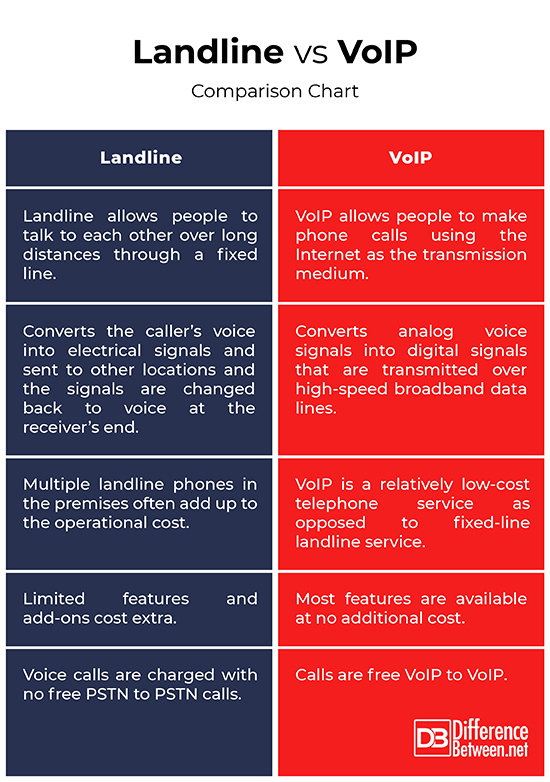Difference Between Landline and VoIP
As mobile phones become more convenient, user-friendly, and portable, they continue to have a significant impact on their landline counterparts. Conventional landline telephone systems are on the verge of their fall, especially with the rapid rise of the VoIP market. No wonder telephone systems have evolved dramatically over the last century. From analog to digital systems and from circuit switching to packet switching systems, technology has surpassed our expectations. And more recently, the potential benefits of converged networks and the rise in broadband Ethernet service has influenced the customers to move from landline to Voice Over Internet Protocol (VoIP).
When it comes to telephone systems for your business or local office, you can use either of the two technologies: landlines or VoIP. Innovative applications can be easily created over the Internet and so embedded as part of VoIP. Rapid increase in the use of personal computers and growing dependency on broadband access to the Internet has fueled the immense popularity of VoIP. VoIP is now seen as one of the evolutionary steps in the telecommunications industry. This is mostly because of the part that VoIP has a lower setup and maintenance cost than using landlines. So what is VoIP? And what makes it so better than the centuries-old telephone systems?
What is a Landline?
Landline, also known as a fixed-line, hard-line, and wireline, is a long-distance telephone service that allows people to talk to each other over long distances, and also connect to the Internet. It is a fixed-line telephone system mostly used in homes or business premises or local offices. Landline phones must be connected to a telephone line. The telephone calls travel by radio, and along cables made from metal or optical fiber, rather than through wireless transmission. It is a physical line that connects to a telecommunications network as opposed to a mobile phone service. A landline telephone converts the caller’s voice into electrical signals, which can be sent to other locations. Each telephone is identified by its exchange number, which in turn determines the path the signal takes. The electrical signals are then changed back to sound at the receiver’s end.
What is VoIP?
VoIP, short for Voice Over Internet Protocol, also called IP telephony, is a new telecommunications technology that allows people to make phone calls using the Internet as the transmission medium over IP networks. VoIP simply means voice transmitted over a digital network. It uses the same protocols used by the Internet to make enhanced voice communications possible. VoIP technology converts analog voice signals into digital signals that are transmitted over high-speed broadband data lines rather than the conventional copper wires used in landline telephone systems. Simply put, VoIP is a telephone service delivered over the network. It enables the conventional telephone service to operate over digital networks using the same protocols that the Internet uses.
Difference between Landline and VoIP
Meaning
– A landline is a telephone service that allows people to talk to each other over long distances. The landline phones must be connected to a telephone line and the wires run underground and connect to other telephone lines through networks that span across the world. Voice over Internet Protocol, or VoIP, is an IP telephony service that allows people to make phone calls using the Internet as the transmission medium over IP networks. VoIP simply means voice transmitted over a digital network using the same protocols that the Internet uses.
Technology
– In terms of technology, traditional landline systems are no match against the more advanced and stable VoIP telephone service. Landline is a hard line that connects to a telecommunications network as opposed to a mobile phone service which converts the caller’s voice into electrical signals, which can be sent to other locations and the signals are then converted to voice at the receiver’s end. VoIP technology, on the other hand, converts analog voice signals into digital signals that are transmitted over high-speed broadband data lines rather than the conventional copper wires.
Cost
– The main difference between using a landline service and VoIP telephone service is the operational and maintenance cost. VoIP is a relatively low-cost telephone service as opposed to fixed-line landline service. In comparison to the traditional calls through PSTN, VoIP offers several advantages such as affordable phone service, cheap wireless connection, easy-to-use features, and low set-up and maintenance cost. VoIP is a multi-purpose, cost-effective telephony service that is almost 40-80% less expensive than its landline counterpart. Landlines use copper wires and having multiple landline phones in the premises often add up to the operational cost.
Features
– In addition to cost saving, VoIP telephony service has more features like reliability, better functionality, scalability, and multimedia support. VoIP not only transmits voice over a digital network, but also video or any other form of multimedia content over IP networks. The technology also allows voice to be converted into email and vice-versa, and allows companies to combine their data and voice networks. VoIP offers everything that would get with a landline, and more. Plus it’s easy to scale as your business grows and additional features can be added at no additional cost.
Landline vs. VoIP: Comparison Chart
Summary of Landline vs. VoIP
VoIP is one of the evolutionary steps in the telecommunications industry. This is mostly because of the part that VoIP has a lower setup and maintenance cost than using landlines, plus most of the features are available at no additional cost. On the contrary, landlines are relatively expensive to setup and maintain, as opposed to the low cost VoIP service, which offers almost everything that would get with a landline, plus more. In terms of technology, traditional landline systems are no match against the more advanced and stable VoIP telephone service.
- Difference Between Caucus and Primary - June 18, 2024
- Difference Between PPO and POS - May 30, 2024
- Difference Between RFID and NFC - May 28, 2024
Search DifferenceBetween.net :
Leave a Response
References :
[0]Image credit: https://en.wikipedia.org/wiki/VoIP_phone#/media/File:Flipphone.jpeg
[1]Image credit: https://pixabay.com/photos/telephone-landline-technology-3312551/
[2]Kelly, Timothy V. VoIP For Dummies. Hoboken, New Jersey: John Wiley & Sons, 2011. Print
[3]Verma, Pramode and Ling Wang. Voice over IP Networks: Quality of Service, Pricing and Security. Berlin, Germany: Springer, 2011. Print
[4]Lepkowski, James M., et al. Advances in Telephone Survey Methodology. Hoboken, New Jersey: John Wiley & Sons, 2007. Print



